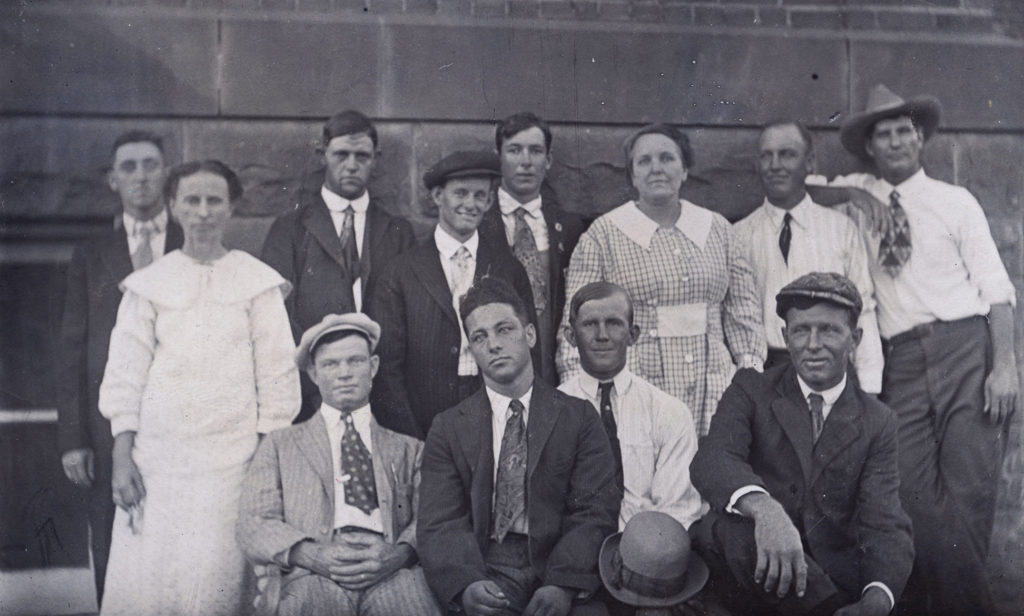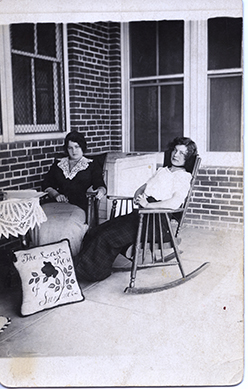 For most of our human history, the perceptions of epilepsy and the people who suffered from it have been rooted in superstitious ideas. For centuries, epileptics were seen as carriers of a dangerously contagious disease, accused of demon possession, or simply viewed as insane. These beliefs may sound far-fetched to us now, but the study and observation of epileptic individuals prior to the early 1900s was extremely limited. Sadly, such common misconceptions led to significant “psychosocial” problems and the delivery of unhelpful (and often harmful) medical treatment for many epileptics.
For most of our human history, the perceptions of epilepsy and the people who suffered from it have been rooted in superstitious ideas. For centuries, epileptics were seen as carriers of a dangerously contagious disease, accused of demon possession, or simply viewed as insane. These beliefs may sound far-fetched to us now, but the study and observation of epileptic individuals prior to the early 1900s was extremely limited. Sadly, such common misconceptions led to significant “psychosocial” problems and the delivery of unhelpful (and often harmful) medical treatment for many epileptics.
Today, epilepsy is recognized as a neurological disorder associated with abnormal electrical activity in the brain. But how did we get from there to here? And what role did Abilene play?
It might surprise you to know that Abilene, Texas, was an early leader in epileptic research and response. When the State Epileptic Colony opened here in March 1904, Abilene was one of only five locations in the entire United States to create a site specifically to help people with epilepsy through ongoing research, care and isolation. The main focus of the colony was not on medication, but rather on employment, exercise, and proper eating habits. More importantly, it offered a place for these individuals to work, live and thrive.
The institution, hospital and complex were state-of-the-art facilities and included an administration building, a power plant, a women’s and men’s hospital, four cottages, and a home for the superintendent. Inhabitants helped support the colony by farming goods such as corn, beef and peanuts, by gardening foodstuffs such as onions, beans and peaches, and by tailoring garments and textiles such as aprons, clothing and bedding.
But it wasn’t all work and no play; the colony made available a variety of events and entertainment for the men and women who lived there. Recreational activities were considered just as important as work and treatments. Baseball, tennis, basketball, and croquet were all frequent, fun activities enjoyed by patients, as were weekly dances, church services, movies, and the occasional outing to the West Texas Fair.
 This great story is being shared in detail through The Grace Museum’s newest history exhibition, Creating a Community: The State Epileptic Colony in Abilene. It tells the story of Abilene, “a most enterprising town,” being selected as the site for the State Epileptic Colony, the colony’s construction and early history, along with the evolution of the complex into the Abilene State Hospital, Abilene State School, and finally to its current designation as the Abilene State Supported Living Center. More than 50 original photographs from the museum’s permanent collection are featured, along with other supporting documents and photos from the State Supported Living Center and other local entities.
This great story is being shared in detail through The Grace Museum’s newest history exhibition, Creating a Community: The State Epileptic Colony in Abilene. It tells the story of Abilene, “a most enterprising town,” being selected as the site for the State Epileptic Colony, the colony’s construction and early history, along with the evolution of the complex into the Abilene State Hospital, Abilene State School, and finally to its current designation as the Abilene State Supported Living Center. More than 50 original photographs from the museum’s permanent collection are featured, along with other supporting documents and photos from the State Supported Living Center and other local entities.
Although epilepsy remained highly stigmatized and misunderstood throughout much of the early 20th century, the few epileptic colonies that existed in the U.S. gave those who suffered from the disorder a place to belong — a sense of real community they often struggled to find at home with their own families.
Today, the Abilene State Supported Living Center continues to operate and serve a vital role in the increasingly broad range of services offered to Texans with developmental disabilities.
Creating a Community will be on view in the museum’s third floor history galleries through July 2022.
Contributed by The Grace Museum




























I found this article very interesting. My Great Aunt lived there. I’m not sure when she arrived. I do know that she was there in 1940 and passed away there in 1945. My Dad said she spent most of her adult life there, she only lived to be 42. I liked reading about how it went from an epileptic colony to a home for those in need.
I stumbled on this while doing family research and found in the 1920 census that a cousin lived there – at that time he was 14. As the mother of a child with epilepsy, I first groaned when I saw it thinking it was a place to “get rid” of those with epilepsy – similar to leper colonies. What a pleasant suprise to find out that residents were thriving there and living somewhat normal lives.
I had a great aunt that was there and she died and 1928 I would like to have more information about her and I want to go about getting it Carter personal thing I heard about my aunt Mitty but the family never talked about her heard my aunt mentioned her one time she thought it was she said it was a shame the way she was done or haven’t epilepsy I guess I would like to know more it’s personal
My grandfather,, Walter J. Mathews was a doctor on staff at the “Epileptic Colony
back in the Early 1900’s He and his family actually lived there ( in the Administration Bldg) and my mother was born there in 1915 (Dorothy Mathews Churchill)., She shared
memories of living there, until they moved into Abilene when she started. school.
Her mother did a lot of work with the patients and was well liked. Dr. Bass and his family
also lived there.
Sorry about that I can’t type I have to tell my phone what to put in these messages and it changes some of my wording for some reason she had epilepsy my aunt Mitty I’m just concerned about the story nobody knows why she passed away or what happened